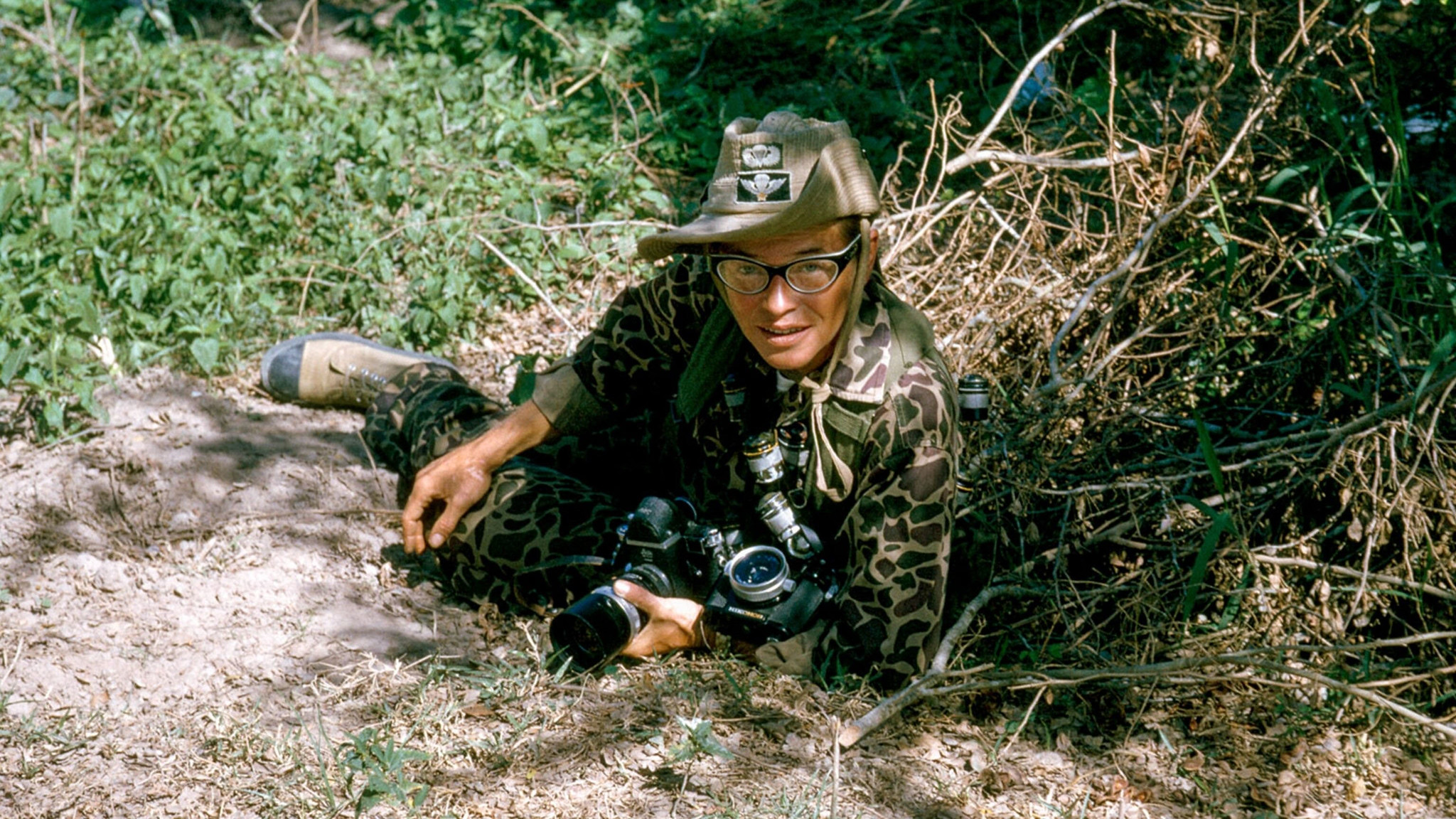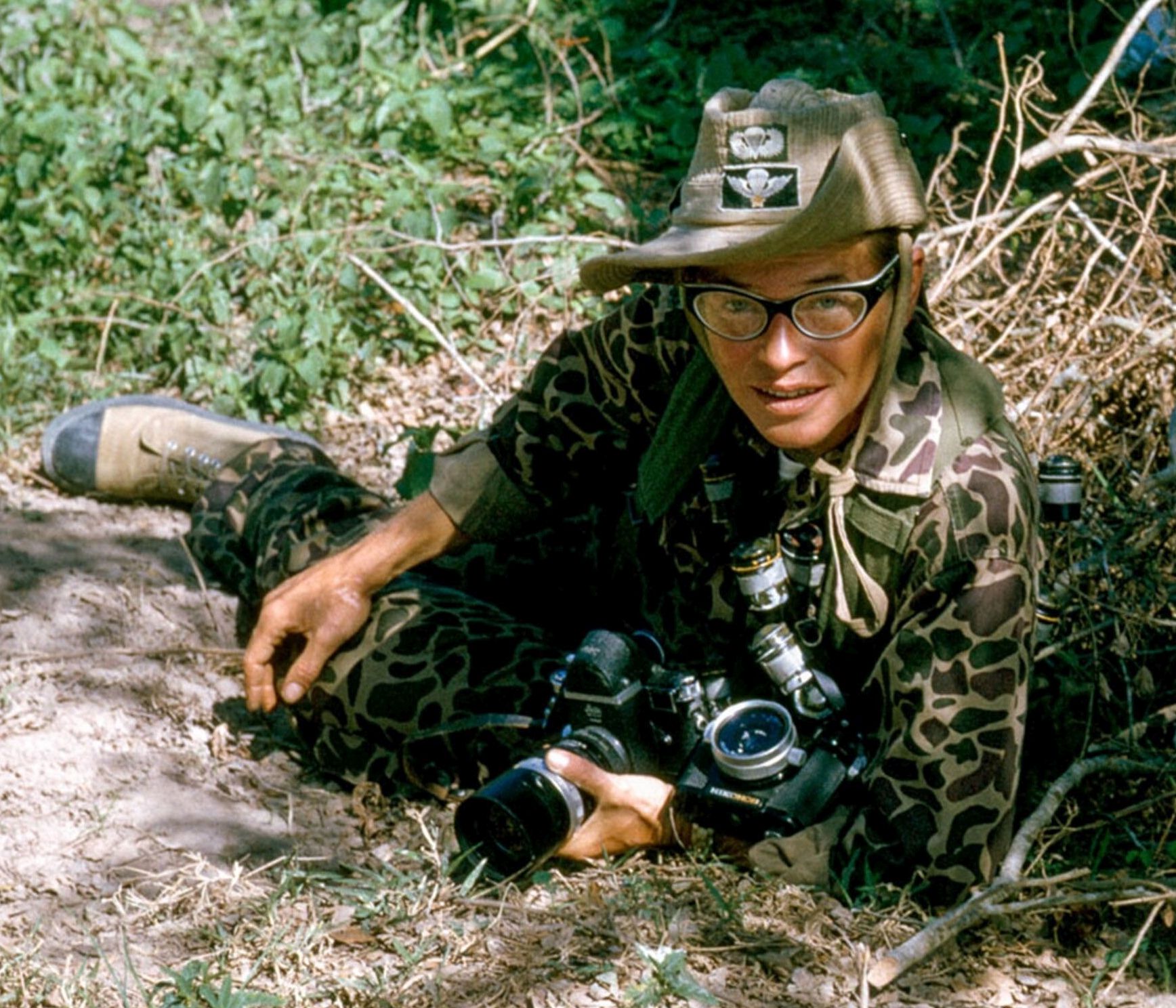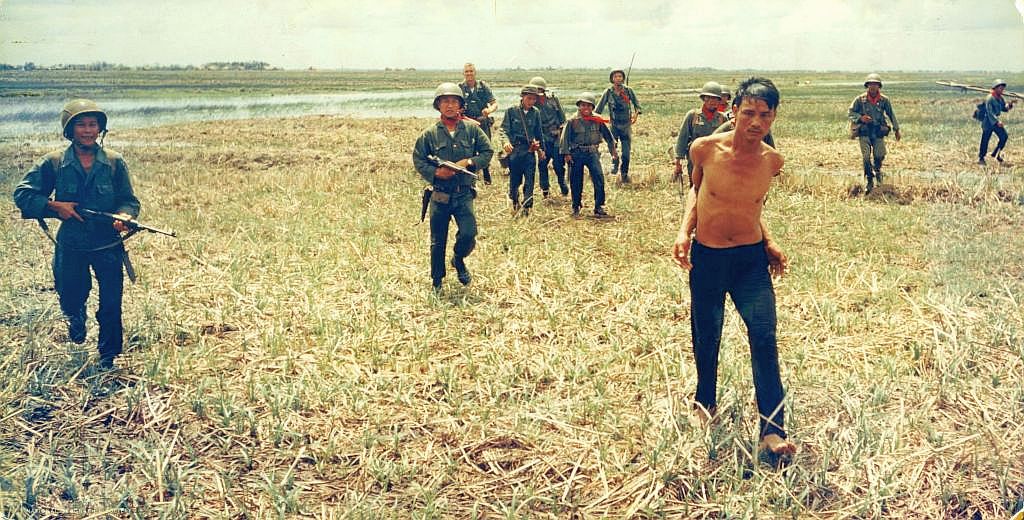Authors:
Historic Era: Era 9: Postwar United States (1945 to early 1970s)
Historic Theme:
Subject:
Fall 2023 | Volume 68, Issue 7


Authors:
Historic Era: Era 9: Postwar United States (1945 to early 1970s)
Historic Theme:
Subject:
Fall 2023 | Volume 68, Issue 7
Editor's Note: Bill Garrett was Dickey Chapelle's primary contact at National Geographic and often worked with her on assignments in the field. He wrote these observations about his friend and colleague shortly after her death. Garrett later became the Editor of National Geographic.

A rainbow decorated the western sky that early morning of November 4 — the second day of Operation Black Ferret. Action began at 0745 when American Marines moved toward a cane field surrounding a village held by the Viet Cong near Chu Lai, South Viet Nam.
A foot brushed a concealed nylon fishing line, a booby trap roared, and shrapnel shredded the damp foliage, felling six Marines and a lady from Milwaukee, Georgette Louise (“Dickey”) Chapelle. She died moments later, half a world from home.
What, you might ask, was she doing there? Dickey, a veteran war correspondent, had asked that same question in her autobiography, What’s a Woman Doing Here? Her mother had taught her that “violence in any form is unthinkable.” But she came to believe we could have peace only by being strong.
She became a correspondent in World War II to be near her husband, Navy photographer Anthony Chapelle. Perhaps it was the shock of photographing the death and horror of Iwo Jima and Okinawa that led her to dedicate her life to “telling the folks back home” how cruel war can be. Almost a quarter of a century later, her byline now famous, this remarkable woman is mourned in a dozen languages.
Because I knew and loved Dickey from working beside her in Cuba, Viet Nam, northeast India, and Ladakh near Kashmir, word of her death shocked and sorrowed me — but it did not surprise. Dickey and danger were never far apart.
The evening before her death, she dug her own foxhole and huddled under a poncho as a light rain fell through the glare of aerial flares. Though I wasn’t there, I’m sure she opened her breakfast of cold C-rations with the Swiss Army knife she always carried.

Staff Sergeant Albert P. Miville told me later what had happened next:
“She asked if she could go with us. I said, `Sure, Dickey; fall in behind me.’ Five seconds later, she was hit. I was only a step away. Some brush saved me. I yelled for a corpsman. He looked at her and told me, ‘Sergeant, there is nothing I can do.’“
The sounds of the violence she had been raised to abhor became the siren song that lured Dickey to every